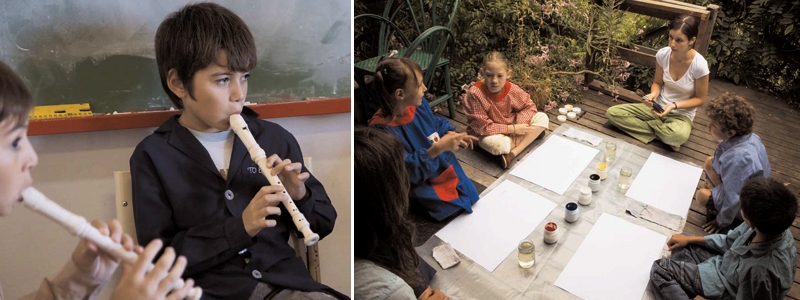Problem: Students divided by age, sitting far apart from one another and tedious theoretical lectures with precious little room for fun are the traditional teaching practices that the Escuelas Experimentales, a network of 38 schools that adopts the democratic education methodology, aims to challenge. Teaching is personalized and collaborative, and based around the visual arts and music. The teaching method follows the precepts of the pedagogy of tolerance, created by the educator and philosopher Paulo Freire, in which education is a process that is continually under construction, with teachers and students teaching and learning together. The pedagogical proposal was first put into practice in 1958, with classes taking place in the home of one of only three teachers. The first public school, the Roberto Themis Speroni Institute of Higher Education, was established in 1984.

Solutions: Students are not divided by grades. Instead, the approximately 100 to 200 infant or primary school pupils from each school work together in groups of up to 15 children, with classes taking the form of discussion groups. Compulsory subjects such as history and mathematics are approached through the arts and music. During a painting class, for example, the teacher might talk about the historical and social context of a historical figure. Teachers monitor the educational development of the students, but also take into account personal issues such as impaired vision or hearing and diet. There are no tests, and student assessment is based on work produced in class. Music, poetry and theater are also used to talk about issues linked to regional traditions, and the musical instruments are available to students for use at home. Every day teachers gather for two hours at the end of their classes to talk about the students and the activities they used, and to plan the next day. Decisions are made jointly.

Outcomes: The network teaching method allows children and adolescents to learn how to study collaboratively, to respect differences and to show togetherness, and ensures that they remain enthusiastic throughout their time at school. They are keen to help one another, and take part in projects created by peers or by themselves. Small class sizes allow teachers and students to build a close relationship. A study by the Center for the Implementation of Public Policies for Equity and Growth (CIPPEC) showed that in 1997, 1998 and 2000, experimental school students in Argentina did better in language and math tests than students from traditional schools.






